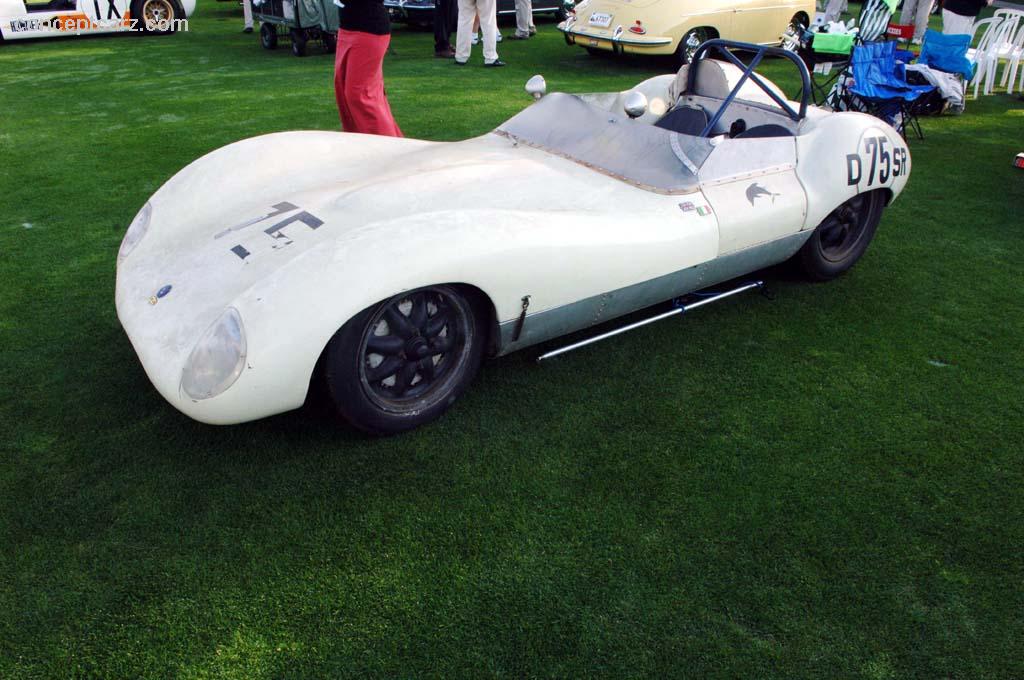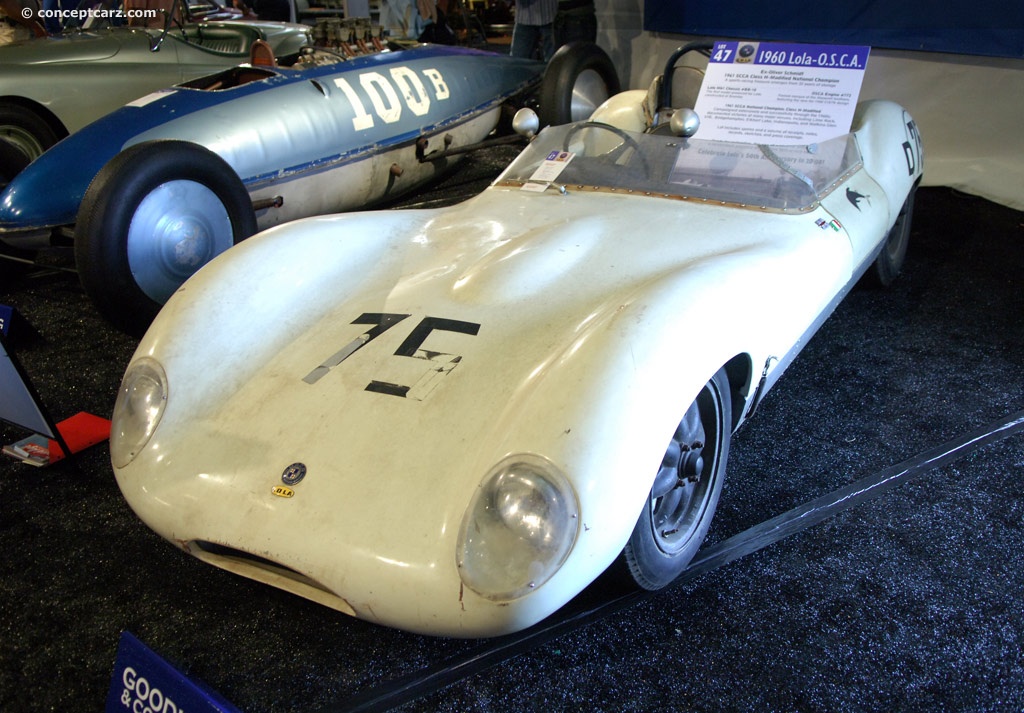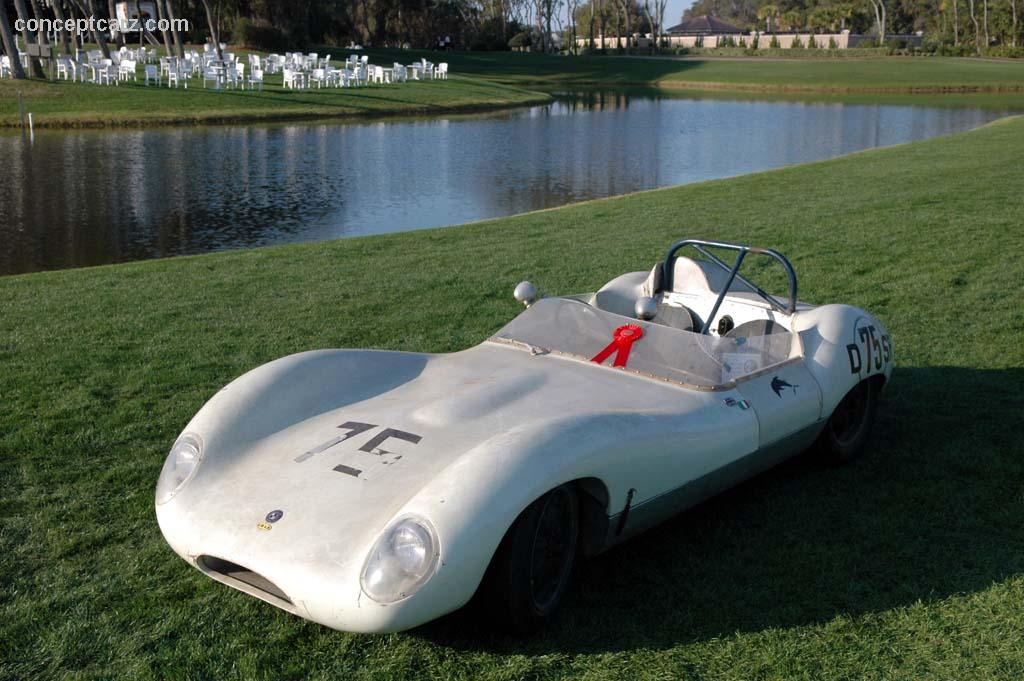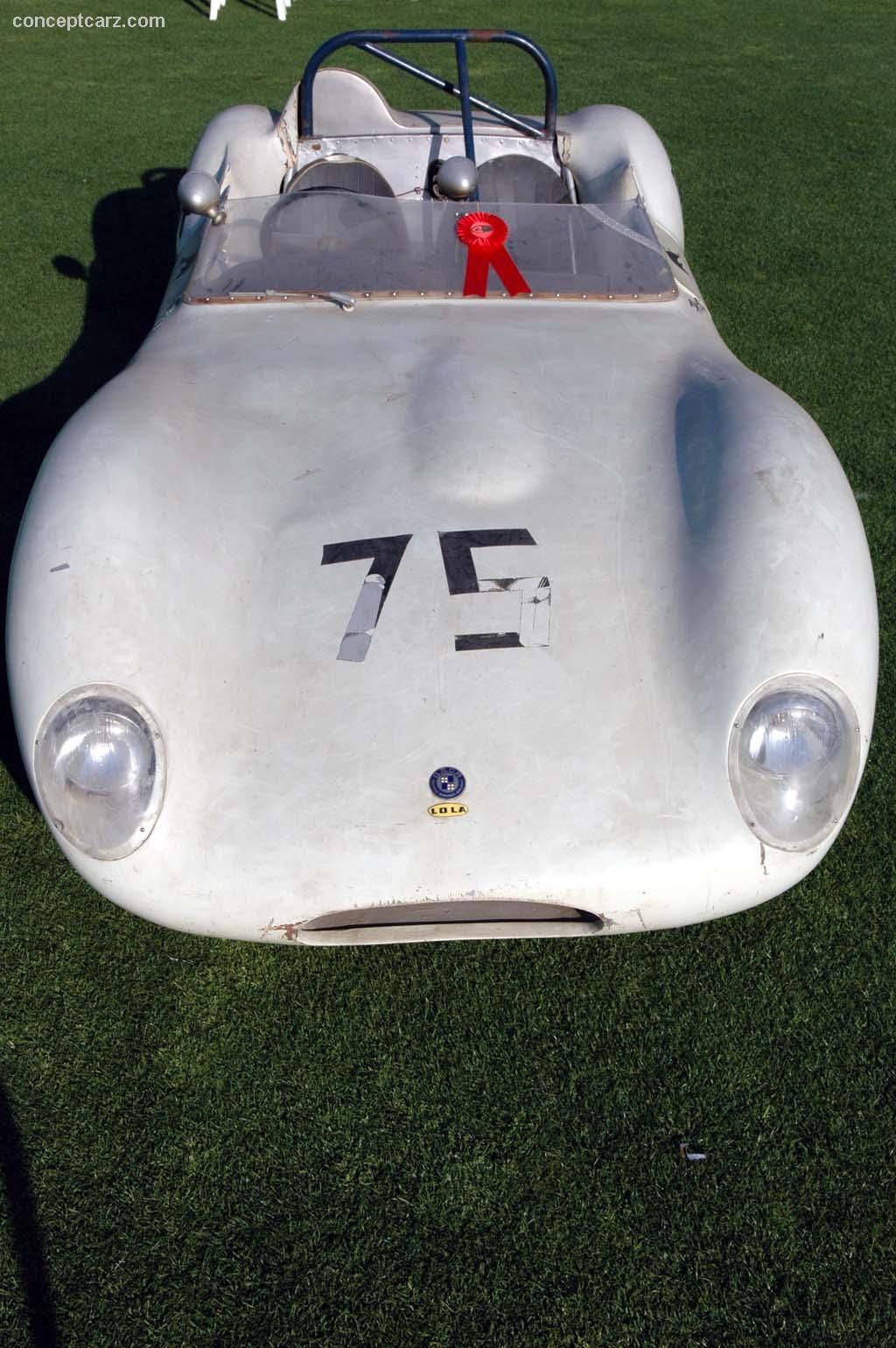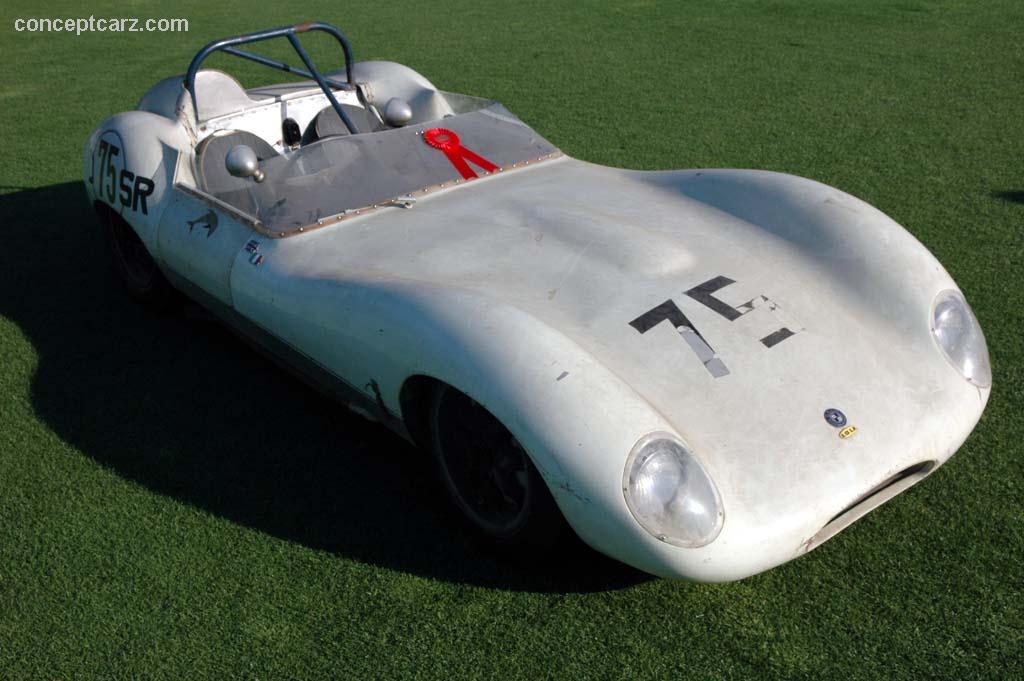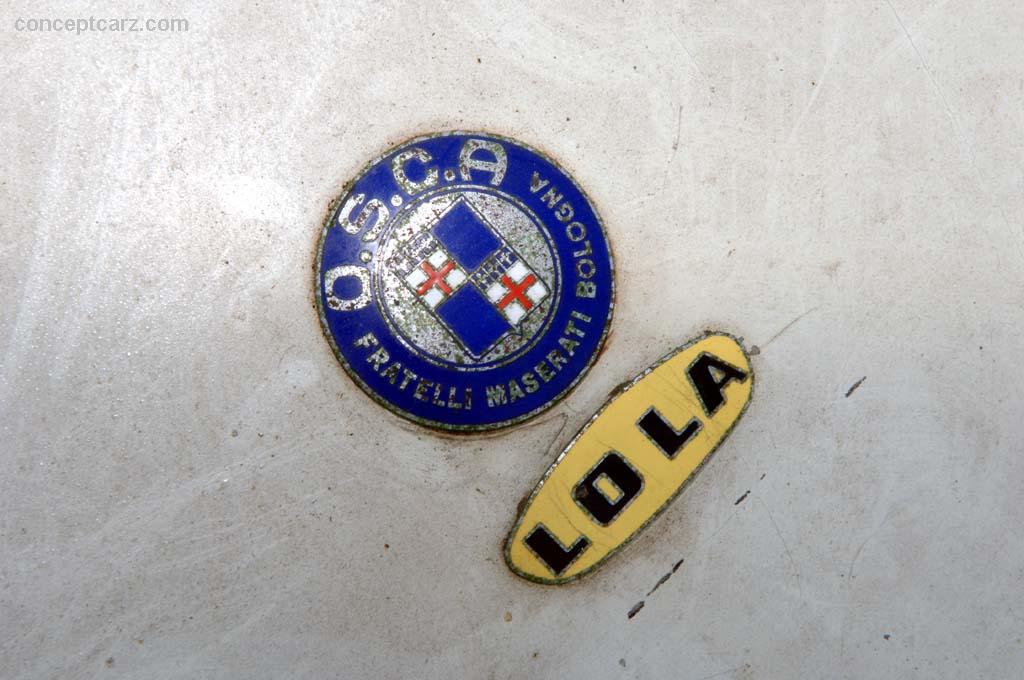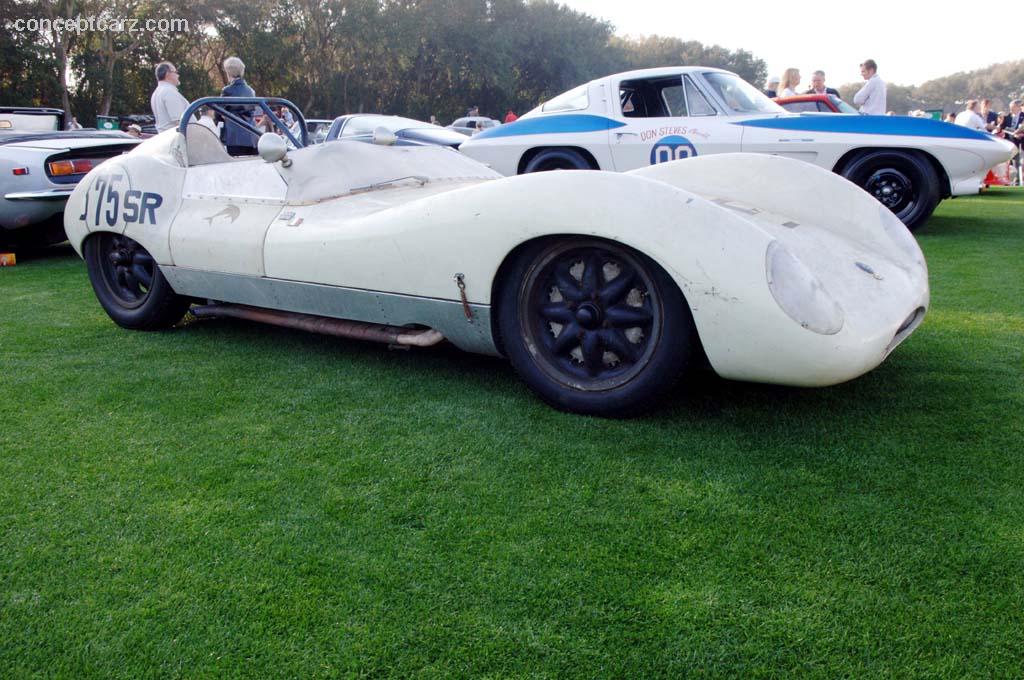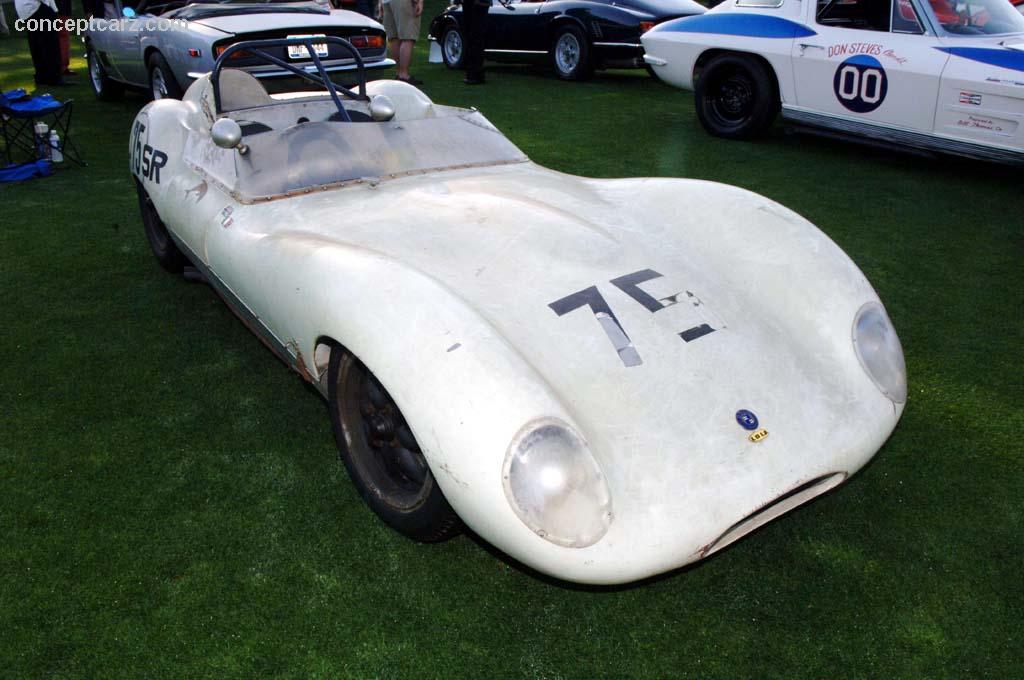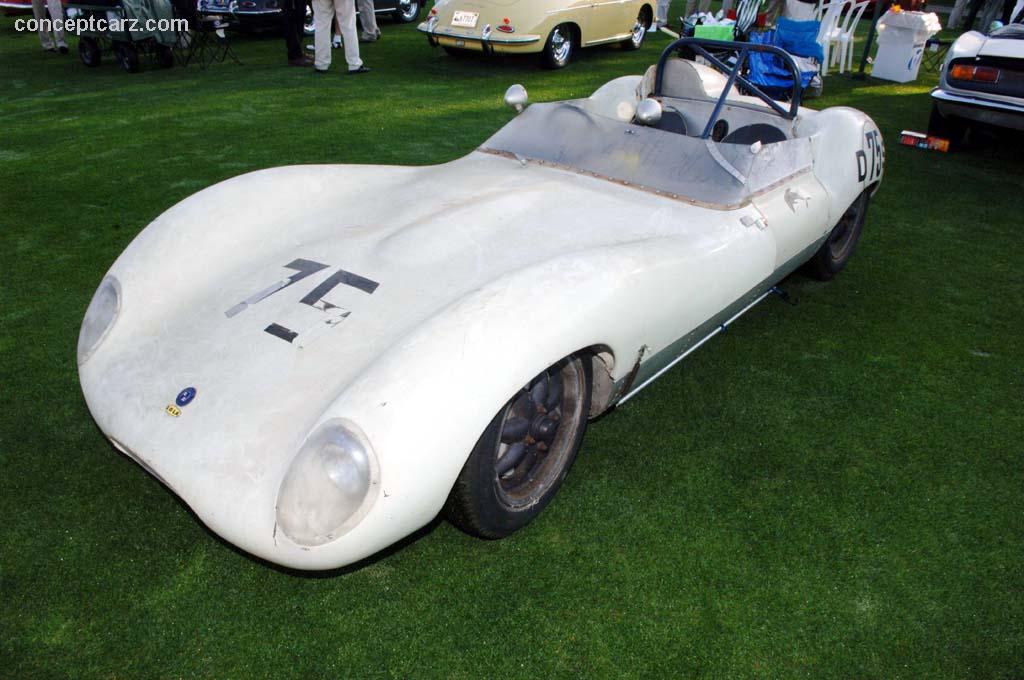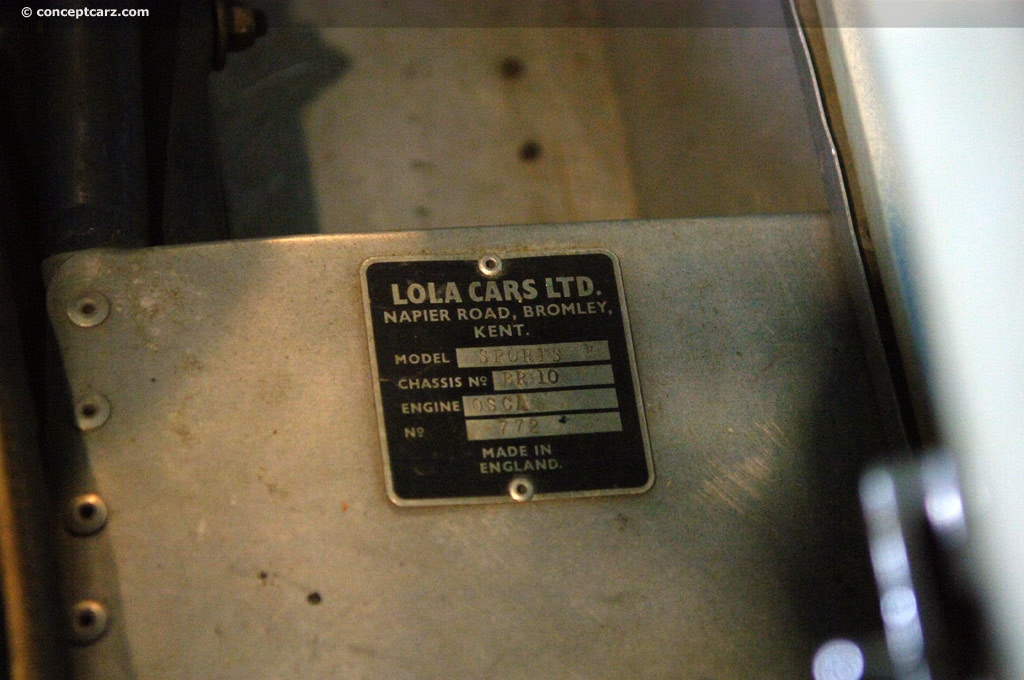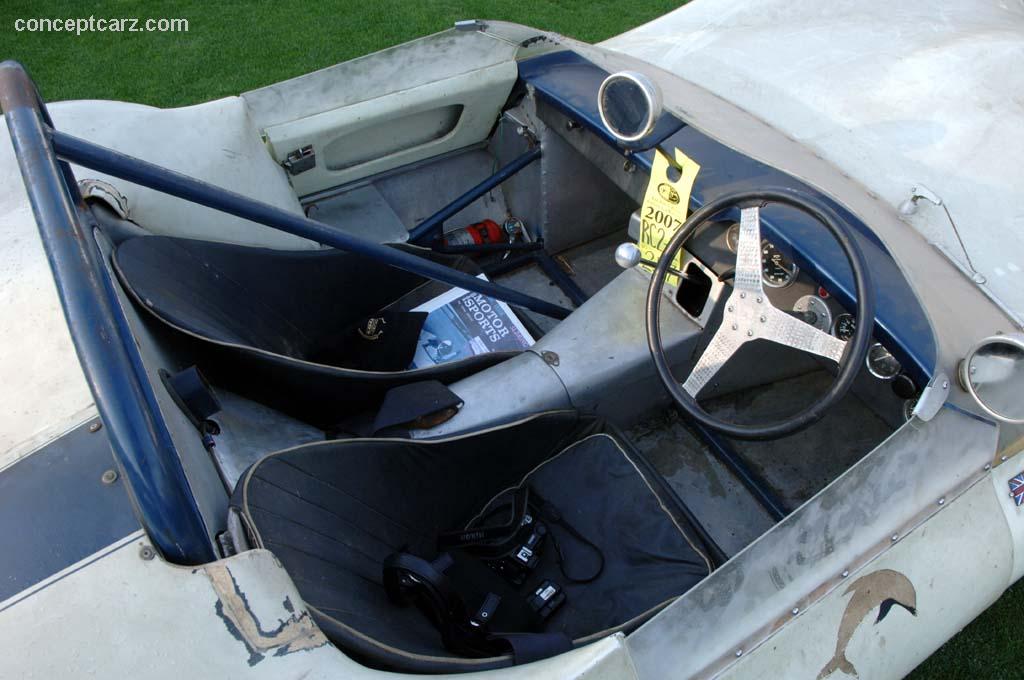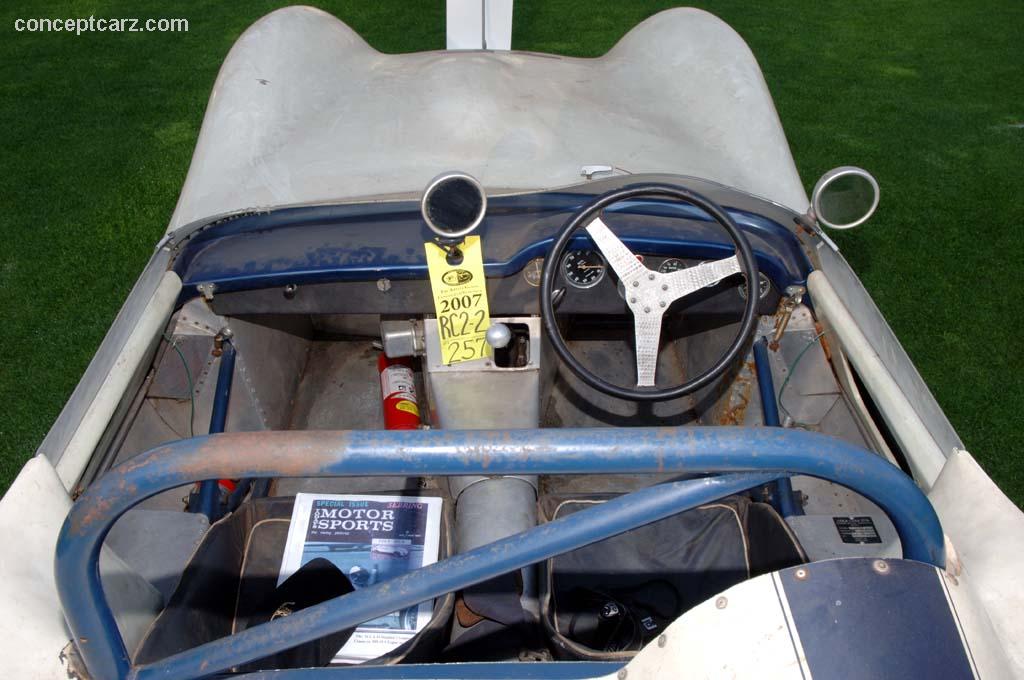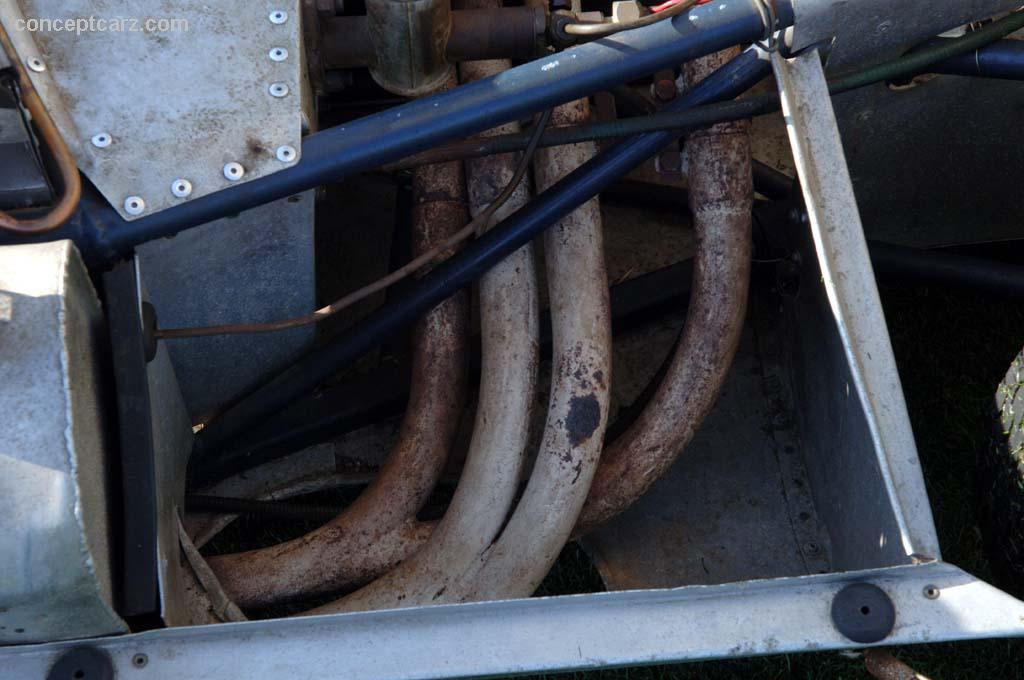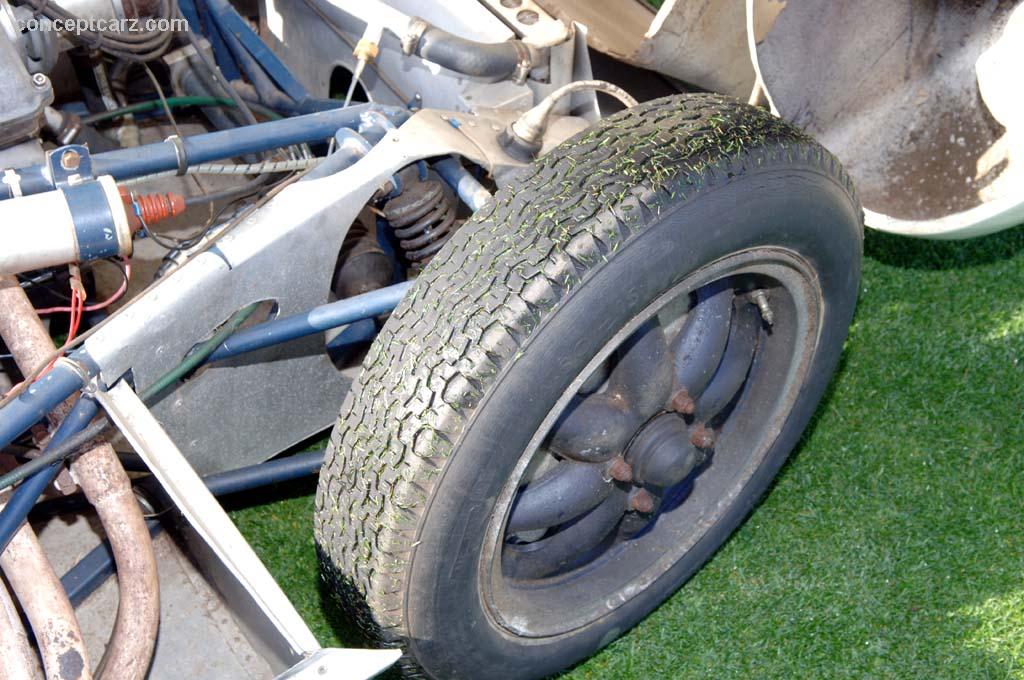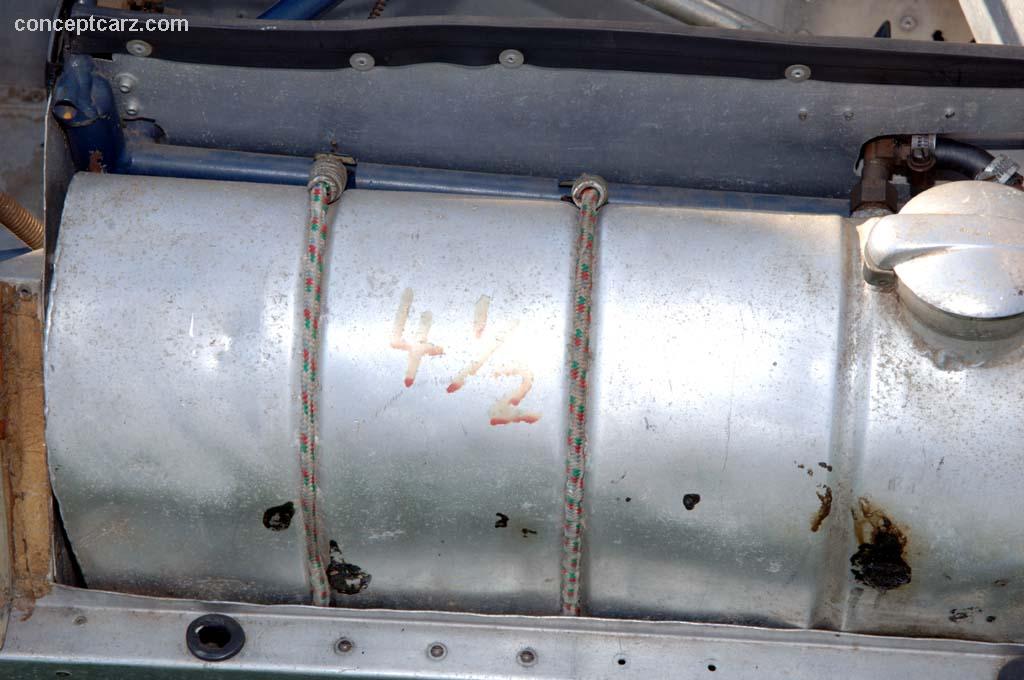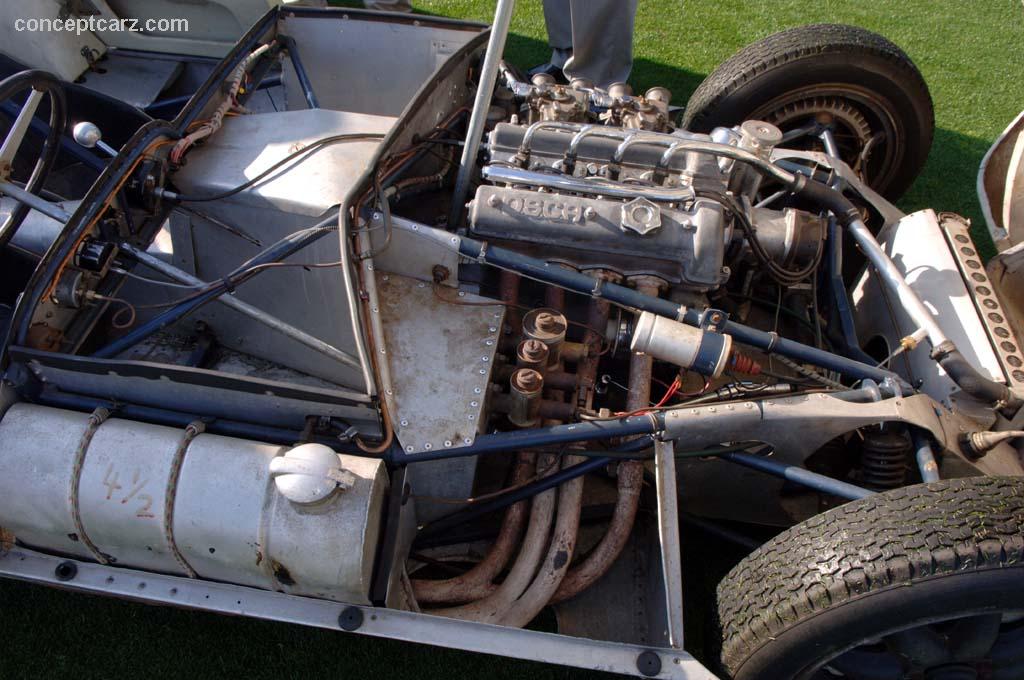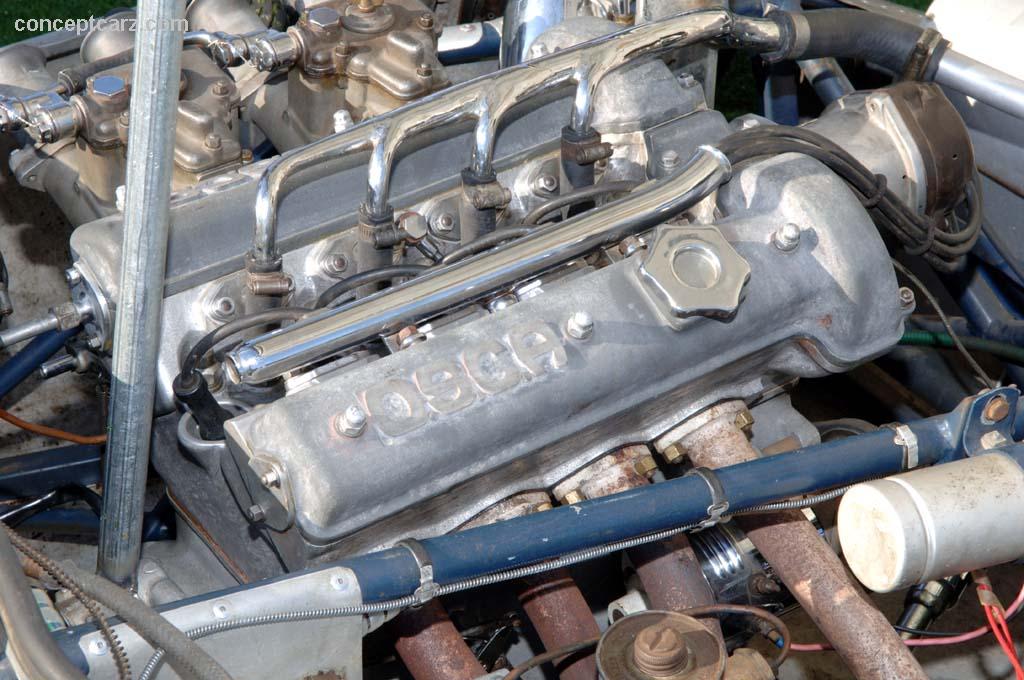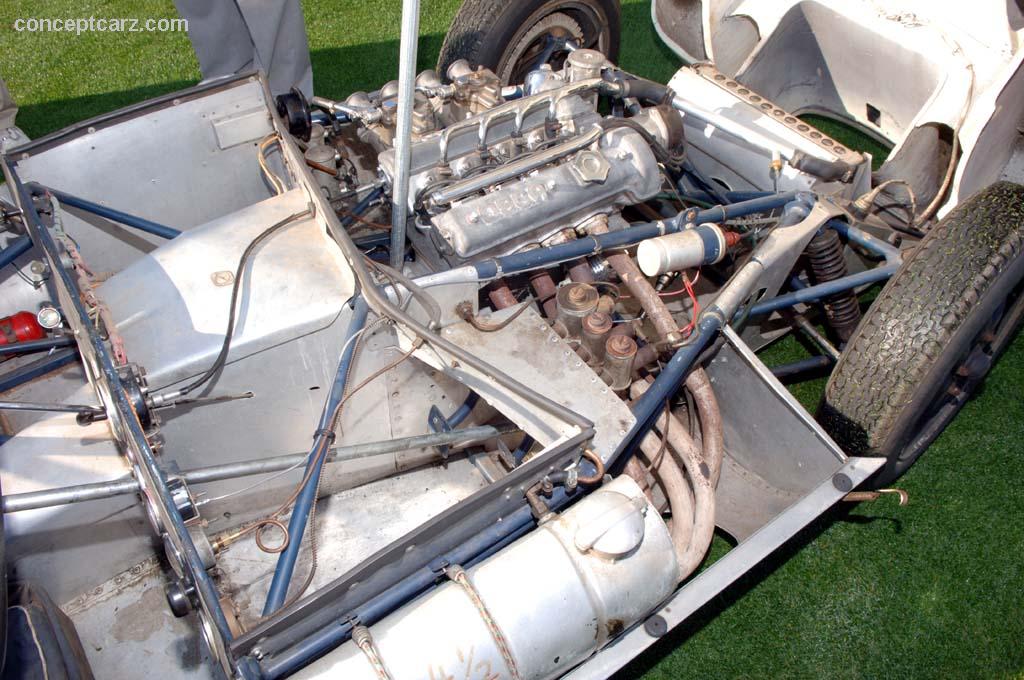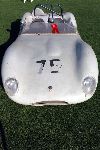Image credit: © conceptcarz.com (Reproduction Or reuse prohibited).
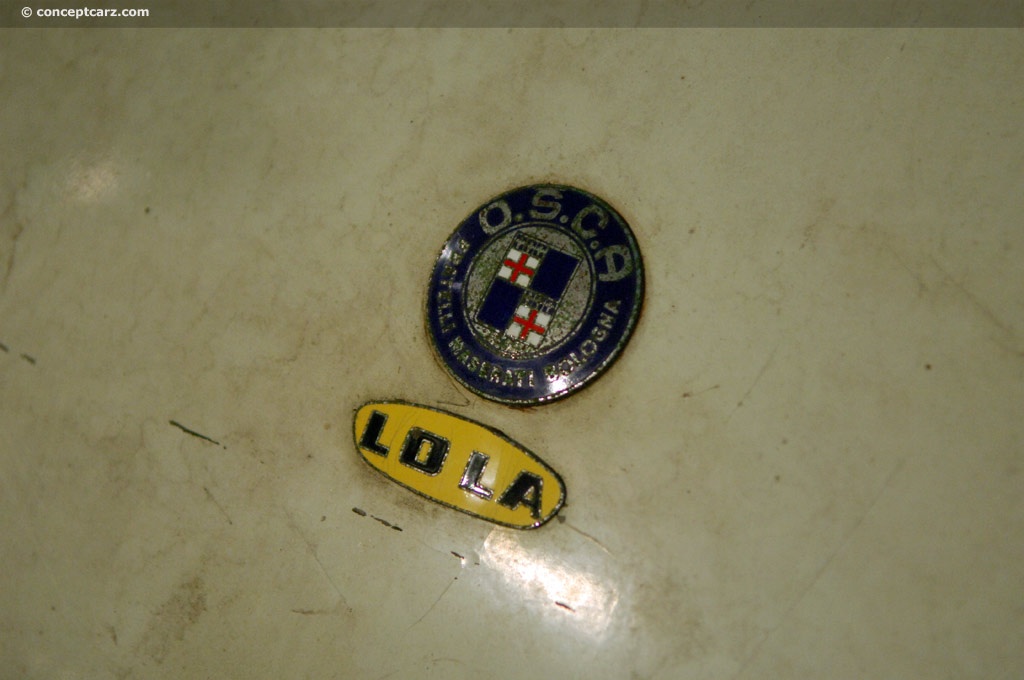
Following the successful debut of three prototypes the year before, 19 Mark 1s were constructed in Bromley, the first Lola factory. Chicago-area distributor Oliver Schmidt worked with Eric Broadley to have chassis number BR-10 fitted with a 750-cc OSCA engine and gearbox to compete in SCCA's H-Modified class. The car was enormously successful, and Schmidt won the class championship in 1961. Its SCCA racing career continued well into the 1960s following a tune-up to 850-cc as SCCA raised H-Modified limited in 1983. the car recently resurfaced after 30 years of storage, and is displayed in 'as-found' condition.
Background
Lola Cars was established in 1958 and within a short period of time, had captured numerous championship titles and overall victories. In 1966 their Lola T70 won the Canadian-American (CanAm) Challenge Cup and the Lola T90 won the Indy 500. A few years later, in 1969, Roger Penske's Lola T70 MK3B won the Daytona 24 Hours. Brian Redman driving a Lola won the SCCA/USAC titles three years running, from 1974 to 1976. These are but a few representations of the Lola success in various forms of racing competition.
The Lola MK1 started it all, weighing in at a mere 860 lbs and powered by a Coventry Climax 1100cc motor that produced 70+ horsepower. The space frame chassis was suspended in place by an independent suspension and in the rear were inboard brakes. The MK1 was very successful in 1960 and would continue this trend through the early 1960s, even against the competitive mid-engines sports racers.
In December of 1947, three Maserati brothers named Bindo, Ettore and Ernesto formed OSCA, short for 'Officine Specializzate Costrutzione Automobili.' Their Tipo MT4 sports racing cars, powered by a variety of engines racing from 1100cc - 1500ccc displacement, captured many important victories during the early 1950s. Their Tipo S-187 was introduced in 1956 and it was powered by a 749cc engine. It was very competitive in the under-750cc class in Europe and the US. The Tipo S-187N version was introduced in 1960 and featured a revised intake and exhaust porting. As the years passed, chassis's from other automakers became more sophisticated and better designed to accept new engine developments. One such constructor was Lola.
This Lola MK1 is chassis number BR-10 and was ordered by Porsche/Volkswagen distributor Oliver Schmidt in 1959. The car was ordered with a new S187N OSCA engine but it did not arrive at the Lola works until early 1960. At the time, it was the most powerful and reliable engine available for the H-modified class. It had twin overhead cams, a displacement size of 746cc, and an available 77 horsepower at 7750 RPM.
Schmidt used the car during the 1960 season in the H-Modified category where it was able to continue his winning streak and secure a points championship in the H-modified class. The following year, Schmidt scored eight firsts and one second in class in 10 SCCA Nationals earning another H-modified championship.
In 1962, Schmidt sold the Lola. The new owners continued its racing career in the northeastern US. In 1963 the engine was bored out to 843cc as the class limitations had been raised to 850cc.
The car was sold in 1968 and by this point in history, the H-modified classification had been changed to D-Sports Racing. The Lola continued to be a contender, winning a first in class at the 1968 Marlboro Regional and having strong finishes in a number of the other races. In the 1970s, the ownership again changed, this time to Francis Ginther. The car still had its original OSCA engine even after a decade of competition. Ginther dismantled the car and stored it for over three decades. In 2006 it was reassembled and remains in its original, unrestored condition as last raced in the early 1970s.
In 2007 it was shown at the Amelia Island Concours and later that year, brought to Pebble Beach, CA where it was offered for sale at the Gooding & Company auction. The car had an estimated value of $300,000 - $350,000. Sadly, it failed to find a bidder willing to satisfy the car's reserve; the lot remained unsold.
Background
Lola Cars was established in 1958 and within a short period of time, had captured numerous championship titles and overall victories. In 1966 their Lola T70 won the Canadian-American (CanAm) Challenge Cup and the Lola T90 won the Indy 500. A few years later, in 1969, Roger Penske's Lola T70 MK3B won the Daytona 24 Hours. Brian Redman driving a Lola won the SCCA/USAC titles three years running, from 1974 to 1976. These are but a few representations of the Lola success in various forms of racing competition.
The Lola MK1 started it all, weighing in at a mere 860 lbs and powered by a Coventry Climax 1100cc motor that produced 70+ horsepower. The space frame chassis was suspended in place by an independent suspension and in the rear were inboard brakes. The MK1 was very successful in 1960 and would continue this trend through the early 1960s, even against the competitive mid-engines sports racers.
In December of 1947, three Maserati brothers named Bindo, Ettore and Ernesto formed OSCA, short for 'Officine Specializzate Costrutzione Automobili.' Their Tipo MT4 sports racing cars, powered by a variety of engines racing from 1100cc - 1500ccc displacement, captured many important victories during the early 1950s. Their Tipo S-187 was introduced in 1956 and it was powered by a 749cc engine. It was very competitive in the under-750cc class in Europe and the US. The Tipo S-187N version was introduced in 1960 and featured a revised intake and exhaust porting. As the years passed, chassis's from other automakers became more sophisticated and better designed to accept new engine developments. One such constructor was Lola.
This Lola MK1 is chassis number BR-10 and was ordered by Porsche/Volkswagen distributor Oliver Schmidt in 1959. The car was ordered with a new S187N OSCA engine but it did not arrive at the Lola works until early 1960. At the time, it was the most powerful and reliable engine available for the H-modified class. It had twin overhead cams, a displacement size of 746cc, and an available 77 horsepower at 7750 RPM.
Schmidt used the car during the 1960 season in the H-Modified category where it was able to continue his winning streak and secure a points championship in the H-modified class. The following year, Schmidt scored eight firsts and one second in class in 10 SCCA Nationals earning another H-modified championship.
In 1962, Schmidt sold the Lola. The new owners continued its racing career in the northeastern US. In 1963 the engine was bored out to 843cc as the class limitations had been raised to 850cc.
The car was sold in 1968 and by this point in history, the H-modified classification had been changed to D-Sports Racing. The Lola continued to be a contender, winning a first in class at the 1968 Marlboro Regional and having strong finishes in a number of the other races. In the 1970s, the ownership again changed, this time to Francis Ginther. The car still had its original OSCA engine even after a decade of competition. Ginther dismantled the car and stored it for over three decades. In 2006 it was reassembled and remains in its original, unrestored condition as last raced in the early 1970s.
In 2007 it was shown at the Amelia Island Concours and later that year, brought to Pebble Beach, CA where it was offered for sale at the Gooding & Company auction. The car had an estimated value of $300,000 - $350,000. Sadly, it failed to find a bidder willing to satisfy the car's reserve; the lot remained unsold.
2007 Gooding & Company
Pre-Auction Estimates :
USD $300,000-USD $350,000
Lot was not sold
Recent Sales of the Lola MK1
(Data based on Model Year 1960 sales)
Lola MK1s That Failed To Sell At Auction
1960 Lola MK1's that have appeared at auction but did not sell.
| Vehicle | Chassis | Event | High Bid | Est. Low | Est. High |
|---|---|---|---|---|---|
| 1960 Lola MK1 | 2007 Gooding & Company | $300,000 | $350,000 |
Vehicles With Comparable Market Values
Similar sales to the range.
1960 Lola MK1
• Additional valuation insight and sales data• History
• Specifications
• Image gallery
• Other Lola MK1 model years
